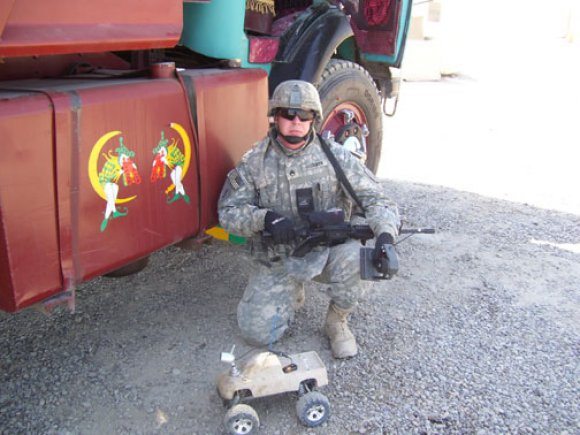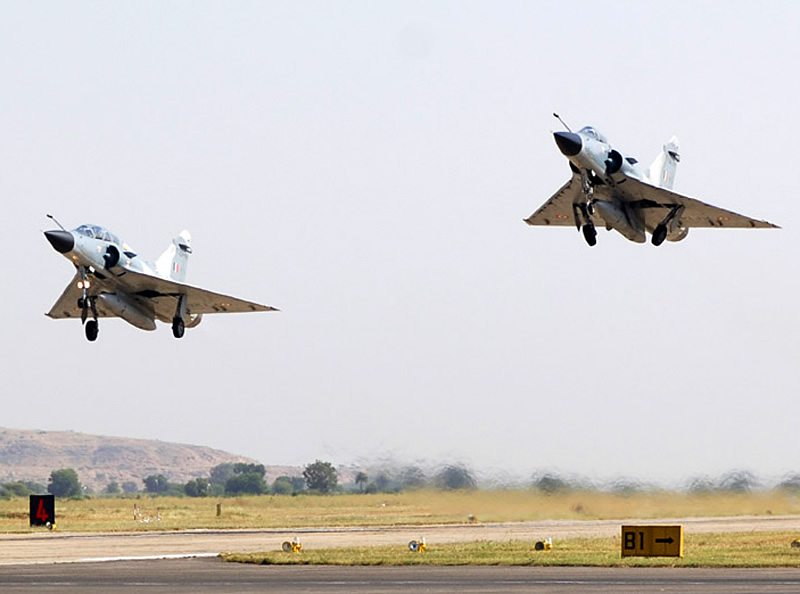Families worry when a Soldier goes off to war — it’s natural. They schedule Internet chats and regular emails and phone calls to check in with one another. They send care packages to their Soldiers to curb any boredom and give them a little taste of home. There are well wishes and litanies of “be safe,” which is about all you can say and do for a Soldier half way around the world. Or is it?
Ernest Fessenden, a software engineer and Rochester, Minn., resident, thought there was something more he could do for his brother, who was deployed to Afghanistan in 2007. So, he sent him a remote-controlled truck.
While the truck was a source of entertainment for Staff Sgt. Chris Fessenden and his fellow Soldiers, he also put the truck to use at vehicle inspection points checking under carriages. It performed admirably. In August 2011, Chris loaned the truck to another patrol to inspect suspicious items along the roads.
“Instead of sending a guy up or doing anything else, they would just drop this little truck out and have it go take a closer look,” Ernest said. “I was impressed the truck was still running, at this point it’s almost four years.”
“That’s when he said one of the guys he loaned it out to, they came to a checkpoint, saw something suspicious, and so they dropped the truck. (They) used (the truck) to look for a way around it and they said it hit a trip wire and exploded.”
No one in the six-person patrol was hurt.
“That was back in ’07,” Ernest said. It was the first time the dangers his brother faced really hit home, and Ernest took an active interest in Chris’ work as a Soldier.
“I asked him ‘What do you do?’ I understand he couldn’t tell me everything, but I figured he could give me some rough (ideas).”
Chris conducted vehicle inspections, Ernest explained. He would get down on his hands and knees and use a mirror to look under vehicles, putting himself in danger.
“That concerned me,” Ernest said. “If there’s something there, he’s right next to it! At the time, it was really in the news about the IEDs (improvised explosive devices), the roadside bombs, and all that stuff, so we kicked around ideas. Is there anything that we can do that would make this safer, easier?”
Chris and Ernest discussed a few ideas, but most of them never took off. Eventually, they came up with the idea of attaching a camera to a remote-controlled truck to look under the vehicles.
The truck was just an ordinary remote-controlled, or RC, toy, found at a local store called Everything Hobby. Ernest bought the wireless camera from an electronics store, and found the receiver online. He asked Kevin Guy, the owner of Everything Hobby, for advice on how to hook up the camera and attached it to the truck.
No modifications were made to the truck to accommodate the environment it was about to enter. Ernest explained to his brother that he would have to maintain the equipment, using the manual as a guide. The camera, fortunately, was weatherproof.
“It was really just discussing with Chris the basics of what he does for his job to try and make it safer,” Ernest said.
When Ernest found out that the truck had been obliterated in the explosion, he immediately returned to the hobby store and told Guy the story.
“(He) donated a truck right then and there, so I put that together with leftover camera equipment I had and mailed it to Chris,” Ernest said.
Guy, amazed by the success of the improvised device and it’s proven ability to save lives, called local media and started doing interviews. The story quickly received national media attention. Ernest and Guy sent the second truck to Afghanistan, and decided that other units would benefit from having their own, so Guy helped set up a program to assemble more trucks.
Within 30 days, Trucks to Troops became a full-fledged 501(c)3 organization. Their website is www.truckstotroops.com.
“Our custom-outfitted trucks are deployed to offer Soldiers in the field a quick and safe alternative to seeking out vital information,” Guy said. “We use a mix of off-the-shelf components with cutting-edge technology.”
They decided to keep the configuration simple, just as they had with the first truck.
Simplicity, Guy explained, is sometimes hard to maintain, as people may want to improve upon the design and add things, but he and Ernest insisted the truck stay as basic as possible.
“We have a supply chain so we can actually produce this thing and ship them out very quickly, and they’re going right now to the right troops,” Guy said.
The truck costs about $500 to assemble and ship with accessories, which is relatively cheap compared to the equipment Soldiers regularly use. The trucks are funded entirely through donations, a grassroots effort.
“Trucks to Troops is really set up for parents and loved ones to donate these vehicles for more of a pin-point attack,” Guy explained.
Ernest works with Chris, other Soldiers and anyone who has questions about the organization. He conducts demonstrations and talks to different groups about what Trucks to Troops is trying to do for Soldiers, while Guy conducts the business end of their effort. Their mission is to get as many of these trucks out to Soldiers as they can, as fast as they can.
Some people have expressed concern that Trucks to Troops is just sending toys to Soldiers, that they could never replace the equipment that the Army provides, or the military training.
“We agree completely,” Ernest said. “We’re not trying to replace anything. We’re just trying to give guys another tool, and if they can use it, great! And if (it doesn’t work) for what they’re doing, well, (they can) pass it on to someone else who might be able to use it. If nobody can use it, well, it’s a toy: Play with it to pass the time.”
Ernest hopes Trucks to Troops keeps going strong, but if donations ever lag, he hopes to release the information on truck assembly to Soldiers so they can put them together themselves.
“It’s just another tool in the toolbox for them,” he said.
Editor’s Note: At the time this article was written, Staff. Sgt. Chris Fessenden was deployed to Afghanistan and unable to be interviewed.











